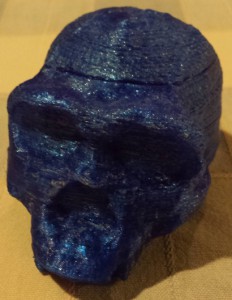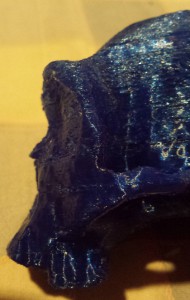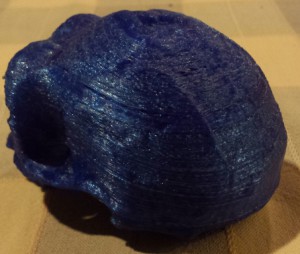Let students set up something like this in a classroom, just with the gear that’s around. You’ll be amazed, and what an awesome learning experience. Let us be amazed too: send us a link to your video!
STEM in USA
See what our friends at STEM Center USA are up to! The gang there have developed awesome programs for schools using Robotics, Raspberry Pi, Arduino, as well as Lego.
Great stuff.
3D printed custom vertebra
Of course 3D printing is cool and funky. But that’s actually just a bonus that helps it get more attention and makes it easier to talk about.
One other great thing is that with 3D printing now, one-offs – aka printing just one copy of a particular design – has become affordable. Previously, only a few research and commercial facilities here and there had a 3D printer, and using it was both restricted and expensive.
Example: Surgeons have implanted an artificial, 3D-printed vertebra into a 12 year-old patient to replace the bone he lost to cancer (article @ sciencealert.com.au)
“Minghao had been lying in the orthopaedics ward of the hospital for more than two months. He could barely stand up for more than a few minutes at a time due to the damage caused by a tumour growing in his neck. In the past, patients with this condition would have received a piece of standardised, hollow titanium tube as an implant, but the new technique involving 3D-printing technology offers them a much greater customisation and a speedier, more comfortable recovery.”
Science and smart (cheaper but good quality!) innovation can do a lot of good. We can imagine how this operation will make a world of difference to that 12 year-old. We wish him all the best and a speedy recovery with his new 3D printed vertebra!
The Age of the Nano Satellite
This is so awesome. Building and deploying a satellite is now so much more accessible. Combine cheaper with open source technology, and you get brilliant educational opportunities, such as the ArduSat project mentioned earlier.
Here is the link to an article that provides an overview of the various cheap satellite technologies currently used, and some of the things getting done.
Young Driven Innovator
Kelvin Doe in Sierra Leone. View his story:
I used to hack around with electronics when I was a teen, yes FM transmitters too, but the stuff that Kelvin does is pretty amazing. He clearly has an intrinsic feel for how things work and how he can fit together what he has to make something his community needs.
And I think it’s an awesome example of both learning, as well as on how innovation really works. Innovation is not driven by lots of money, and big corporations. Innovation happens when someone sees a problem, and figures out a (new) solution using the limited resources as their disposal.
Certainly, having some resources can help. But “infinite resources” don’t help good ideas bubble up magically. It’s often a degree of scarcity that makes the idea spark happen!
Finally, it’s a good example of how much young kids can do. It makes no sense for kids to never have touched a soldering iron, and possibly get to use one some time during university (if they go there). What a waste.
There are so many cool projects out there to get started with, and local groups that facilitate this learning and exploration! For instance Gold Coast TechSpace, founded by Steve Dalton and others, does exactly that. Check it out!
3D prints of early hominins: ergaster

Meet Homo ergaster (also known as African Homo erectus), specifically specimen KNM-ER 3733.
How cool is this? We think very cool. This is the same fossil you see a photo of all over the net. It’s amazingly different when students can actually hold a print in their hands, and study it. And after that, you realise how unsatisfactory diagrams are.
This is a very old piece of our human (hominin) history. Our ladyfriend ergaster here (the skull is thought to be of a female) is one of the oldest of her kind ever found, and approx 1.8 million years old.

Mind you, this particular print we did is only half-size (by X/Y/Z, not volume) but the detail is fantastic. On the second photo you can clearly see some teeth and yes you can actually feel them!
While the skull is fossilised and filled-in, the zygomatic arches on the side are still there (they’re missing in many specimens) and with the right slicer settings (including scaffolding) the printer has no problem creating a beautiful print. It just takes a while…
This skull print and some others have already been used by Claire Reeler (archaeologist) for a project at Grovely State School. The kids had a great time, an awesome hands-on learning experience, and we hope to publish the materials here soon so you can use them too.



The kit was easy while still fun to build (except maybe for fitting the wires in). This was a fun…
Florence (15) and Keito (14), students at Hakusan International School